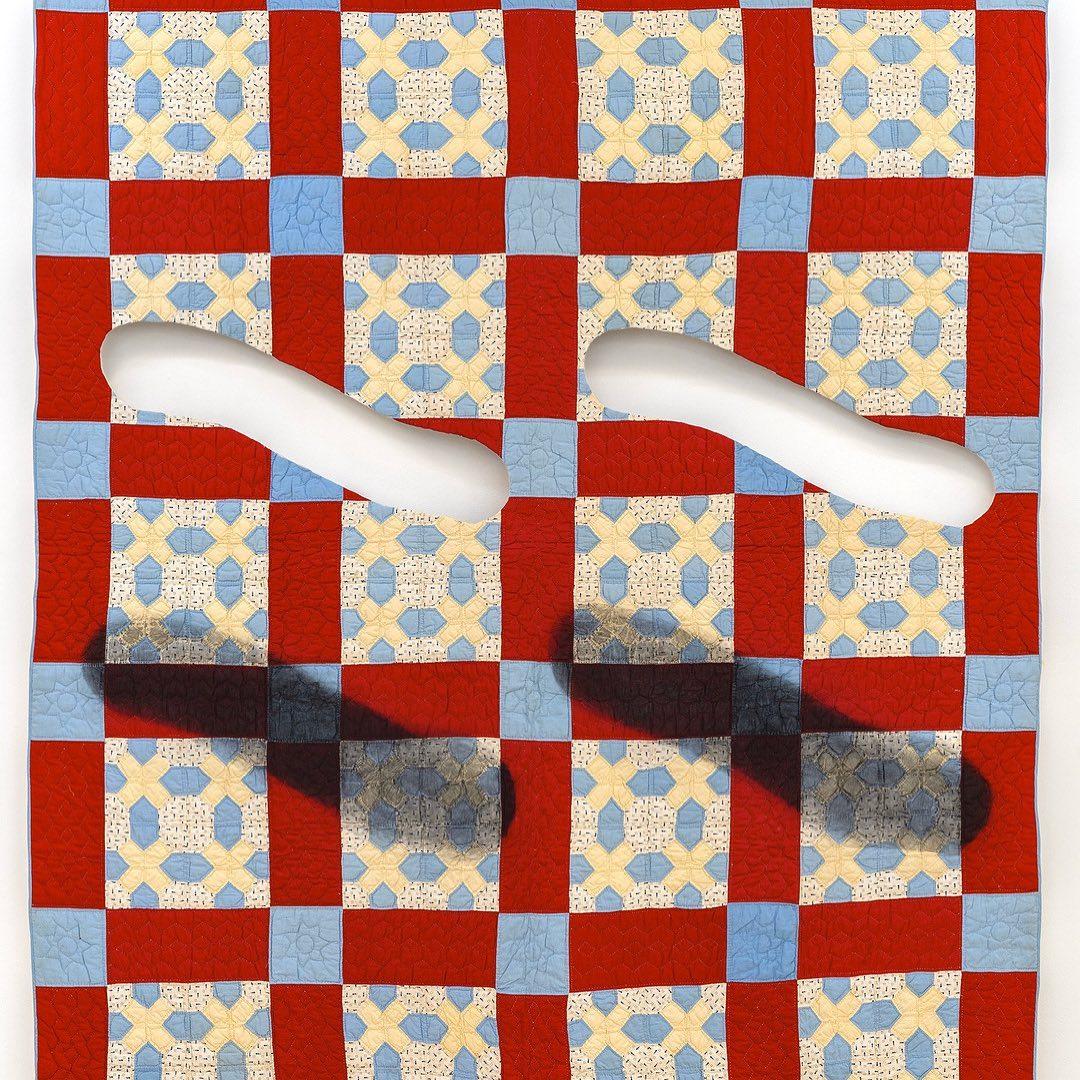
Sanford Biggers, Something Close To Nothing, 2019. Cut antique quilt, graphite. Via @sanfordbiggers
For the 96th year, the John Simon Guggenheim Memorial Foundation has awarded its coveted grants to the best and brightest artists and scholars in the US and Canada. This year’s class features 175 diverse writers, researchers, artists, and scientists who are selected based on their prior achievements and potential to impact their fields and the world.
This year, twenty-five fellowships were awarded in the category of fine arts, with others honored in the related fields of fine arts research, photography, and performance. Here is a selection of some of the outstanding winners of this year’s Guggenheim Fellowships.
Victoria-Idongesit Udondian explores the ways that fabric and clothing shape our identities and culture. Using largely upcycled textiles, she creates installations and sculptures that expose the subtle meanings and impact that ever-present fabrics can have. Born in Nigeria and now New York-based, Udondian was recently part of an outstanding baroque installation at the SPRING/BREAK art fair.
Patricia Treib’s simple geometric abstractions have a calming effect--their elegant forms and cool colors feel like an antidote to much of today’s maximalist art. Treib is inspired by a diverse sampling of art history, focusing on the negative spaces in great works. The result is intriguing compositions that offer deceptively complex tableaux. Treib is represented by Kate MacGarry, London.
Sanford Biggers is perhaps the best-known name in this year’s cohort of fine arts Guggenheim Fellows. The multi-disciplinary artist explores lost moments in African American history. His recent series of quilt-based works reflects the history of quilts having served as signaling flags along the Underground Railroad. Biggers is the head of Mood Medin, a multimedia performance collective, and is represented by Marianne Boesky Gallery.
'Neveruses' are what J Stoner Blackwell calls his upcycled sculptures comprised of plastic bags and fibers. Blackwell subverts what refuse and thread are supposed to do and mean, as well as what paintings and sculptures often represent, in his hybrid forms. Blackwell is represented by Kate MacGarry, London.
Steve Locke’s portraits and sculptures take a critical look at the Black experience in America, exploring themes of masculinity, race, and identity. Locke often uses the visual language of modern art to engage with contemporary issues, creating works that reference art history, the politics of racism, and current events
Though they look like fine weaving, Ellen Lesperance's intricate, delicate works are gouache on paper knitting instructions in the form of paintings. Knitters can follow the coded patterns in the paintings to create remarkable garments from history. Part historical document, part instructional text, and part beautiful and skillfully created painting, Lesperance's works are complex and captivating. She is represented by Derek Eller Gallery in New York, and Adams and Ollman Gallery in Portland, Oregon.
View a full list of this year's Guggenheim Fellows here.
























